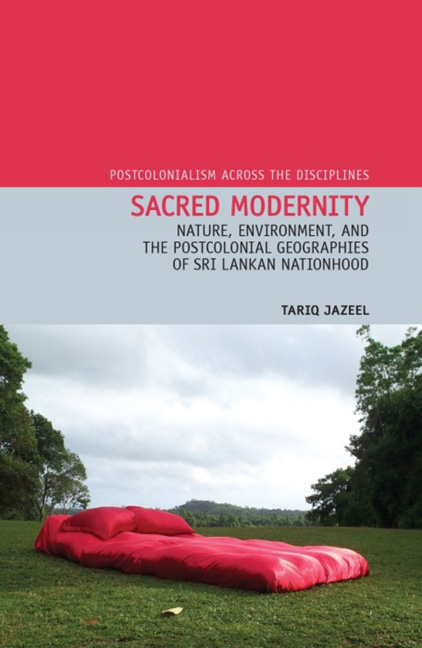Book contents
Introduction
Summary
The National Atlas of Sri Lanka has seventy-three versions of the island - each template revealing only one aspect, one obsession: rainfall, winds, surface water of lakes, rarer bodies of water locked deep within the earth.
The old portraits show the produce and former kingdoms of the country; contemporary portraits show levels of wealth, poverty and literacy.
Michael Ondaatje, Anil's Ghost (2000), p. 39Nature is something of an obsession in Sri Lanka. Visitors to the island and residents alike never stop marvelling at the abundance of flora, fauna, and the succession of staggeringly beautiful landscapes with which the country seems to have been blessed. But if Sri Lankan nature captivates, it has rarely ever been strictly ‘natural’. Commonplace understandings of the country's nature are deeply entwined with narratives of history, culture, and religion. As Michael Ondaatje remarks in his novel Anil's Ghost, even the National Atlas of Sri Lanka seamlessly intertwines aspects of Sri Lanka's non-human composition - rainfall, winds, water - with historical portraits of ancient kingdoms. In fact, the very first lines in the National Atlas begin: ‘The ancient chronicle Mahavamsa records that Sri Lanka was divided into regional units and that village boundaries were established over the whole country. Moreover, evidence from rock inscriptions show that every Buddhist monastery had its boundaries strictly fixed and defined’ (1988: 11). Buddhist history, it seems, is inscribed in the environmental fabric of this state-consecrated geography of the island; Buddhism sits in the place of environmental origins. It is no wonder then that Ondaatje's novel Anil's Ghost implicates palpable human experiences of Sri Lankan landscape and nature within the country's troubled political present; experiences that as the novel suggests are so often redolent with the weight of the country's Sinhala history and Buddhist religion.
Sacred Modernity takes Ondaatje's intervention seriously. The book explores the relationship between nature and Sinhala-Buddhist nationhood in Sri Lanka, particularly in the context of the normalization of ethnicized social relations and identities. It focuses on the ways that dominant discourses, materialities, and not least the poetic registers of Sri Lanka's natural environment form part of an ongoing spatial production of ethnicized identity and difference.
- Type
- Chapter
- Information
- Sacred ModernityNature, Environment and the Postcolonial Geographies of Sri Lankan Nationhood, pp. 1 - 8Publisher: Liverpool University PressPrint publication year: 2013



